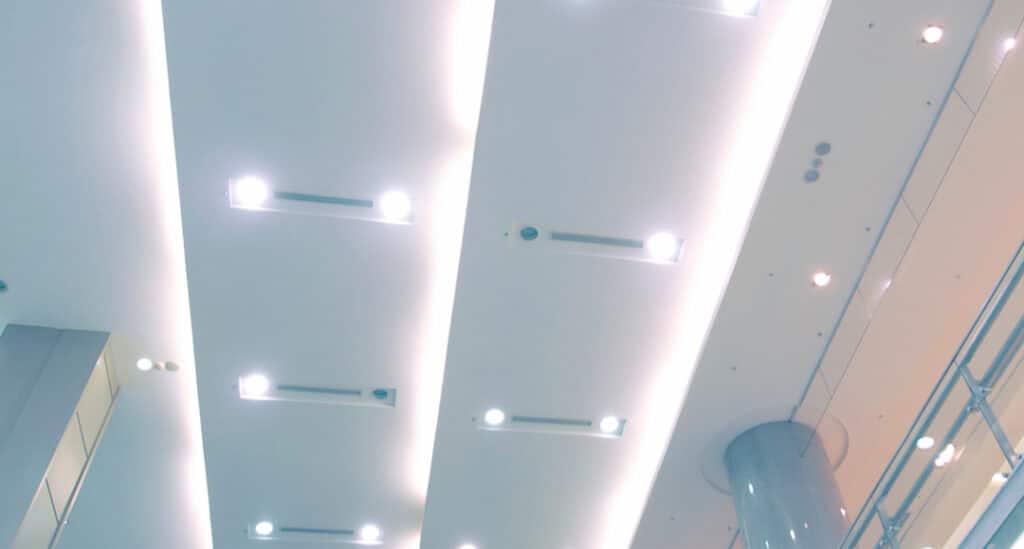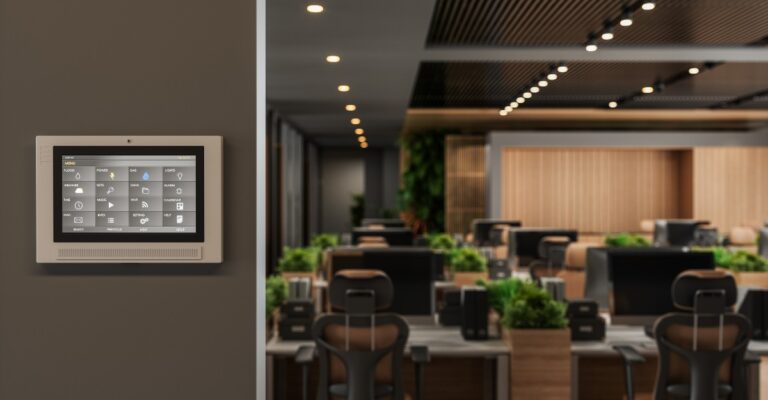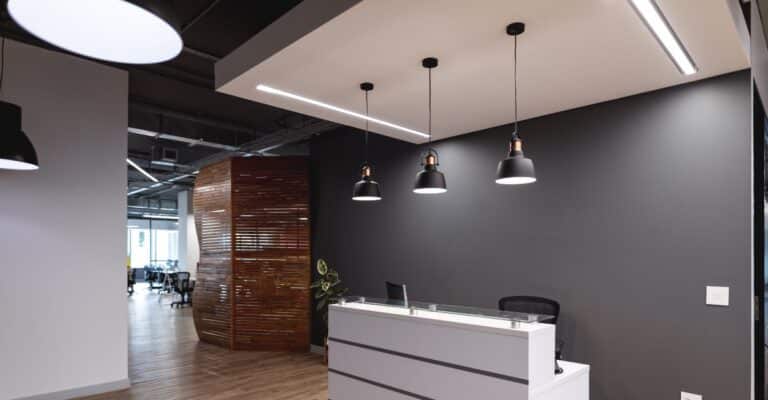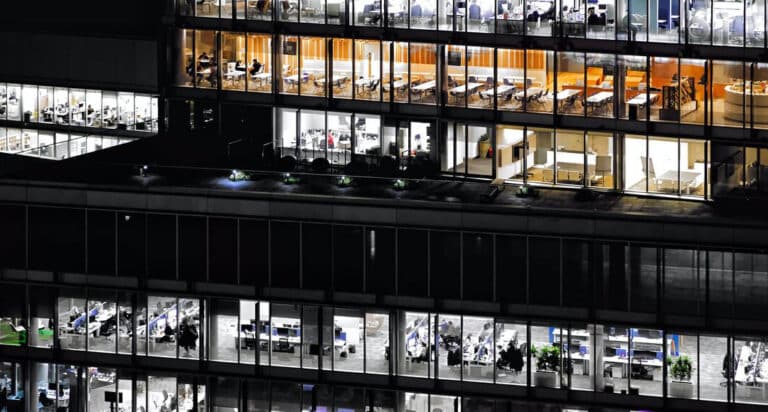What are lighting sweeps, and what are the best ways to use them? In this blog, we answer those questions and more.
Lighting Lessons Learned in a Post-COVID World
During the great shift to remote work that came in the wake of COVID-19, those of us that work in the realm of commercial office space have learned many new lessons firsthand. Specifically, for those of us in the building automation world, we have seen some preconceptions of best practices put to the test against some real extremes of the commercial work environment.
In the world of commercial lighting control, managing lighting in unoccupied spaces has always been a top priority. There were traditionally many ways to handle unoccupied office lighting, and the challenge was always to find a balance between energy efficiency, lamp life, architectural and design needs, and ease of use for occupants in the space. Layered into this equation were national and local laws, preferences of the design and engineering teams, along with emergency lighting requirements of the space.
Now, as we begin our return to the office, we’ve all had time to look back and analyze how well the various methods of occupancy-based lighting control have stood up. There is one control method in particular that did not fare well during the time of COVID… the technology of time-based sweeps, alternatively referred to as after-hours, blink-warn, or flick-warn.
What Is Time-Based Sweep Lighting Control?
As the name implies, a sweep-based lighting control system energizes or de-energizes the lighting in a space based on a system clock. These systems can range in complexity from a simple timer driving a contactor up to complex, distributed, processor-based systems.
For buildings of a certain size (those that are required to have a form of lighting control by code), timer-based sweeps could often be the cheapest and simplest code-compliant control to implement. Simply route the lighting circuits through relays or a contactor, attach a timer, and voila! Code-compliant lighting control achieved!
These simple forms of time-based control were never as efficient as more distributed systems, nor were they really meant to be. One major efficiency gap is that these types of systems all required some form of override, to be used in case someone wanted to work outside the normal operating hours. However, these overrides often turned-on whole sections of a building, severely over-lighting the space based on overall utilization. Additionally, it needed to be determined how the lights would be turned back off after a timed sweep.
Blink-Warn / Flick-Warn
This question of how to turn the lights back off after they had been overridden on brings us to the concept of blink-warn (sometimes known as flick-warn). A blink warn system warns occupants of the impending lighting sweep by flashing the lights in the space several times (usually 3). This flash gives occupants a few minutes to make their way to the nearest override station, to essentially “add time” to the system, otherwise, the lights will shut off for the night. The occupant presses the button, and the system extends the amount of time that the lights are on, usually for 60, 90, or 120 minutes. At the end of this period, the lights flash to warn again, repeating the cycle.
Just like before, the lights that are held on are typically more than a few occupants of the space need. Additionally, particularly in the days of fluorescent lighting, this flashing wasn’t great for the life of the lamps. Finally, setting the blink warn period was always a challenge… Too long of a period and lights could stay burning for hours every week in an unoccupied building. Too short of a period, and the occupants would go crazy in the constantly flashing lights.
Has COVID Done Away With Time-Based Sweeps?
The biggest issue with blink-warn lighting isn’t mentioned above and has really come into the spotlight in the last two years. What happens to a time-based sweep system when the entire office works from home?
This concept was always a consideration pre-COVID. The higher-end sweep systems all had one-off programming options allowing the lights to be held off on company holidays. Additionally, we at Paratus Service Group have always held as a best practice (when allowed by specification and code) those sweep systems should typically only use their schedule to sweep lights off and that the first person in every morning should be responsible for manually pressing a master over-ride to turn the lights.
By requiring a manual button press to turn the lights on, buildings would not automatically light up to full brightness in the morning, preventing the lights from burning all day with no occupancy whatsoever. In a pre-COVID world, this simple precaution was enough to manage the few holidays every year that would leave the building empty.
But now, post-COVID, we see that this precaution is not enough. We have seen numerous clients return to the office on a very small scale. Someone pops into the office to grab a file, to pick something up, or for a quick meeting, and in doing so, uses the primary override for the whole floor. Now, rather than a quick burst of lighting for 15 minutes, the floor remains turned on all day.
In addition, these timer-based systems can require upkeep and maintenance, and this is work that is easily forgotten and put in the back of mind when the entire office is working from home. Our team at Paratus Service Group has been called into numerous offices where we find circuit breakers have been turned off, clocks lost their time, and holidays not updated. All of these issues create systems that don’t work properly, and in many cases, turn lights on for days, weeks, or months at a time to light an office that is never occupied.
It is not practical to expect the lights in your office space to remain off all day, but neither is it necessary in an office with a 10 or 20% occupancy level to have their lights burn at 100% all day long. The sweep-based lighting system was always a rough but adequate tool for lighting control in the office space during full occupancy, but in the world of hybrid work, a much more finely-tuned approach is needed.
Occupancy and Vacancy Sensing
Luckily, occupancy sensing is well established already in the world of commercial offices. Those office spaces that utilized occupancy sensing found themselves in a much better position during COVID concerning their lighting utilization. Most office spaces already use localized occupancy sensing control in their private office spaces, and more and more are starting to use occupancy sensing in common areas and open office space.
One reason why it is essential that we begin to shift away from sweep-based lighting, however, is because these localized occupancy sensors are often powered from the same contactors and relays that sweep the rest of the floor. In this setup, the time sweep that turns off the corridors and open offices can also kill power to the private offices. Now, the single person working late in their private office has to go and sweep the whole floor back on to get their personal occupant sensor to begin working again.
So, why has occupancy sensing been less popular in common areas than in private offices? Well, first and foremost are cost and complexity. Installing a single sensor to control a single light in a private office is straightforward. However, line-voltage sensors that cover a large area must be wired in a much more complicated fashion, especially if there is dimming that needs to be incorporated as well. In office spaces with cubicles, sensors must be installed tightly enough to ‘see’ into each cube space so no one is left in the dark.
Deciding which fixtures to group into an occupancy zone can be tricky for an open office area as well. Making these groups too large keeps too many lights on if only one or two people are working but making these groups too small can cause distraction with lights popping on and off all day. Plus, desks near the “edge” of an occupancy group can be left in half-light if the nearby occupancy group turns off.
The Future of Occupancy-Based Lighting
The good news is that newer lighting control technology can alleviate these problems.
First, wireless occupancy sensors can be installed for a fraction of the cost of older line voltage sensors, and this lower cost allows more sensors to be installed to create better fine movement detection than ever before. Plus, newer occupancy sensor technology can feed data into an intelligent lighting management system rather than creating a binary, lights on/lights off dynamic.
By feeding occupancy data into a smart lighting system, occupancy lighting decisions can be made using conditional and dependency programming to create the best possible lighting environment. Rather than creating static lighting groups that are either on or off, a smart system can “mesh” lights together so that no one is ever near a darkened-out area. Lighting decisions can be made based on the time of day so that during normal hours, the lights in the open office don’t ever turn off, they dim to a low level to prevent distractions.
The concept of dependent spaces can also be used to create some powerful occupancy options. For instance, the corridor lighting in the core areas of a building can be set to stay on so long as there is at least one person detected in the building. This enhances the feeling of safety for anyone working late without requiring the whole floor to be turned on. When the system no longer detects any occupancy, all of the lights will be turned off.
The best part about this solution… It is work-from-home proof! If no one comes into the office on any given day, the lights won’t turn on.
Occupancy Versus Vacancy
Occupancy sensors operate the way we are all used to… Walk into a room, and the lights turn on. Leave the room, and after 5, 10, 15, or so minutes, the lights turn off. The problem with occupancy sensors is that they will turn the lights on as soon as they see motion and then leave those lights on for extended periods. Have you ever walked by an open door and seen the lights inside turn on because the sensor saw you? What a waste of electricity!
Vacancy sensors solve this problem by only turning the lights off when you leave while leaving the “on” part to you. When you walk into a space, you will have to turn the lights on by pressing the control at the door; but don’t worry if you forget to turn the lights off when you leave, the sensor will handle that part.
Many people who are not used to vacancy sensors can get frustrated by them, especially when they are used to the auto-on functionality of occupancy sensors, but in my experience, people usually come around when the benefits are explained.
Lastly, you can always get the best of both worlds when you use smart sensors as part of an intelligent lighting control system. Programmable sensors can be set to operate in occupancy mode during the work day when it is more likely the lights will be on and in vacancy mode after hours when it’s less likely people are there.
Conclusion
No one could have predicted the swift and immediate shift to remote work that we saw during COVID, and no one could have predicted how suddenly time-based lighting control would become a liability rather than a benefit. However, with the benefit of the lessons we have learned during the last two years, we at Paratus Service Group believe our controls standards need to shift more and more to vacancy based lighting controls, rather than the blanket approach of lighting sweeps.
When you need help with commercial lighting control solutions, Paratus has your back. As always, if you need any assistance with your lighting control solution, don’t hesitate to reach out to our team!



